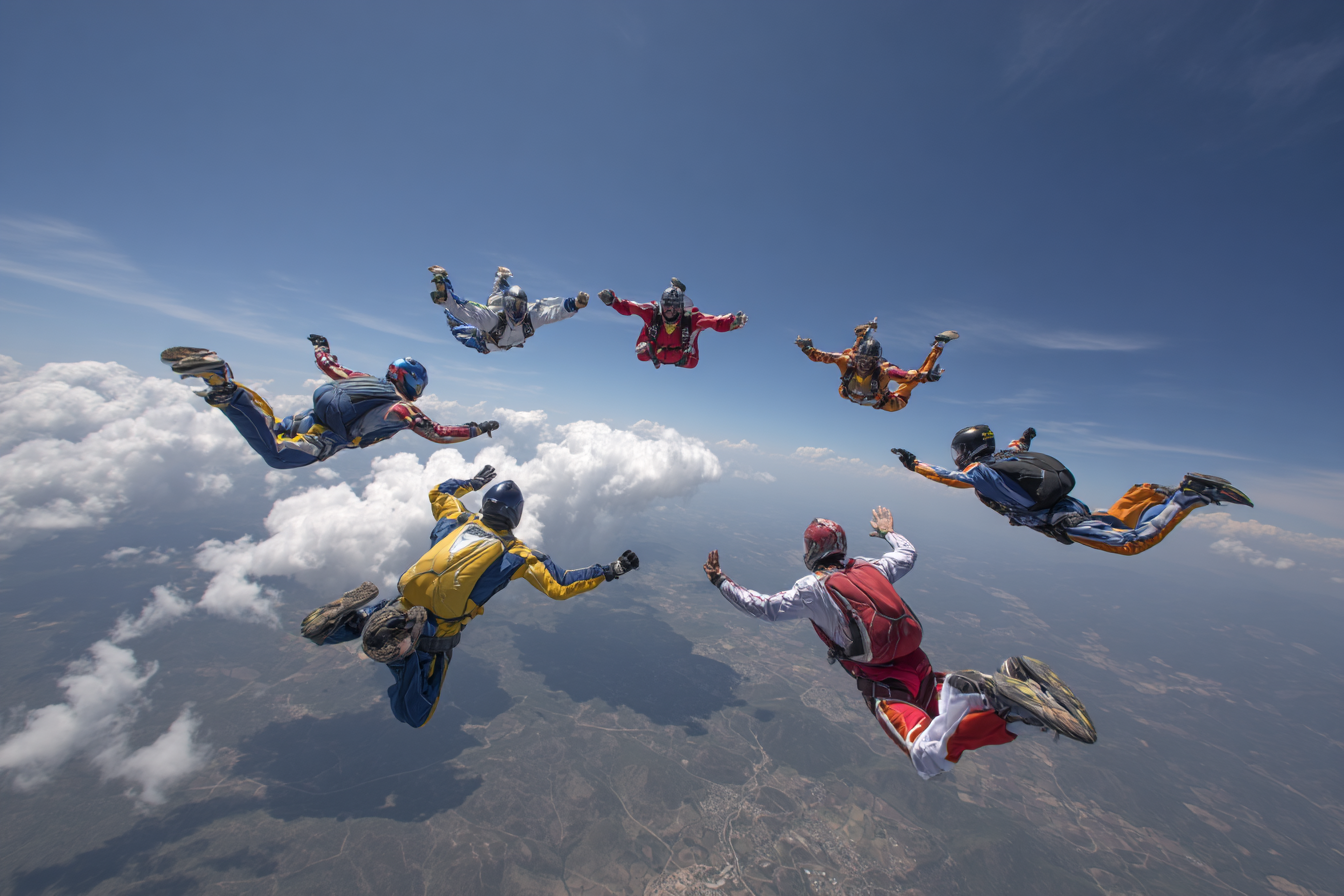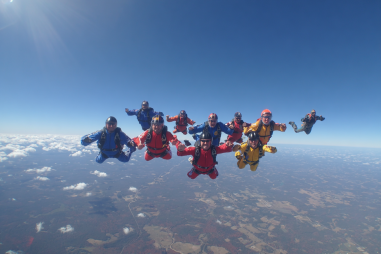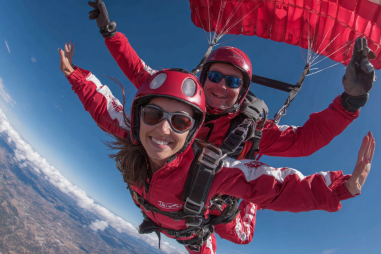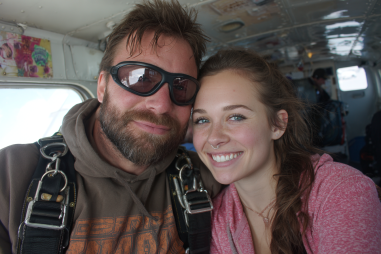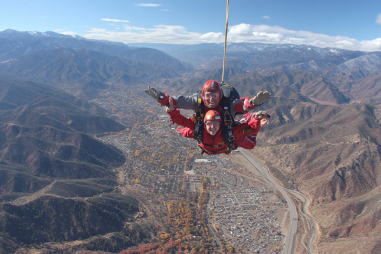Skydiving is an exhilarating sport that combines adrenaline with skill, precision, and discipline. Once you’ve mastered the basics and gained experience through beginner and intermediate jumps, the next step is to challenge yourself with advanced skydiving training techniques. These techniques help refine your abilities, increase your safety awareness, and prepare you for more complex jumps and even competitions. Whether you’re looking to perfect your freefall maneuvers, sharpen your canopy control, or dive deeper into competitive skydiving, advanced training provides the tools and knowledge you need to elevate your skydiving expertise to the next level.
Transitioning from Beginner to Advanced Training
Making the move from beginner to advanced training requires a solid foundation of fundamental skills and a commitment to continuous learning. Beginner skydiving courses focus heavily on safety protocols, body position, basic canopy control, and emergency procedures. Once you’ve comfortably executed these basics on numerous jumps, transitioning into advanced training means increasing the complexity and precision of your skills.
During this stage, experienced jumpers begin to focus on improving body flight techniques, learning intricate freefall formations, and embracing new disciplines like wingsuit flying or freeflying. It’s essential to approach this transition with patience and respect for the risks. Advanced skydiving often involves higher speeds, tighter formations, and more demanding maneuvers, all requiring excellent spatial awareness and control.
Finding a reputable training facility and experienced instructors who specialize in advanced techniques makes a significant difference. They provide structured progression plans and personalized feedback that can help jumpers safely expand their skillsets.
Key Advanced Maneuvers and Formations
One of the most exciting aspects of advanced skydiving is mastering complex freefall maneuvers and formations. These maneuvers require precise control of body position and timing, often in coordination with other jumpers, to perform safely and effectively.
Some common advanced maneuvers include:
- Head-down and head-up flying: In contrast to the traditional belly-to-earth position, these orientations increase falling speed and challenge your ability to maintain stability.
- Track and turn maneuvers: These are used for changing relative positions during group formations or for precision in approach and docking with other jumpers.
- Docking and sequential formations: These involve multiple jumpers connecting to form shapes or patterns, often requiring impeccable timing and spatial coordination.
- Close proximity flying: Flying near other jumpers to create dynamic formations while maintaining safety margins.
Each maneuver demands hours of practice and often uses progressive drills to build muscle memory and confidence. Additionally, skydivers frequently break down maneuvers in wind tunnels, which offer a controlled environment to perfect movements before taking to the sky.
Canopy Control and Landing Precision Techniques
While freefall maneuvers often steal the spotlight, canopy control is a critical component of advanced skydiving. The ability to precisely steer your parachute through challenging wind conditions and execute flawless landings is essential for safety and performance.
Advanced canopy control training focuses on:
- S-turns and stall turns: Techniques to regulate speed and positioning during the canopy flight.
- Canopy flaring: Perfecting the timing and strength of the flare to slow descent and achieve a soft, accurate landing.
- Spot landing drills: Practicing the ability to land within a small target area (often called a “spot”), which is crucial for accuracy competitions.
- Dealing with turbulence and other unpredictable weather elements: Learning how to adjust your flight plan in adverse conditions.
Many jumpers use simulator tools and ground training to improve their canopy skills before applying these techniques in actual jumps, ensuring safer and more confident landings.
Using Video Feedback to Improve
One of the most effective methods to advance your skydiving skills is through video feedback. Recording jumps with helmet cameras or using ground-based cameras provides jumpers with the opportunity to review their form, positioning, and coordination from multiple angles.
Video analysis allows you to identify subtle errors that aren’t always noticeable in the moment during freefall. It offers detailed insight into body position, timing of maneuvers, and canopy handling techniques. Many advanced training programs incorporate video debriefings where instructors review footage with skydivers to provide constructive critique and suggest improvements.
Some advanced jumpers use slow-motion replays and side-by-side comparisons to benchmark their progress and set new goals. Accessible technology and video-sharing platforms have made it easier than ever to share footage with fellow jumpers and coaches, fostering a supportive training community.
Safety Considerations in Advanced Training
Safety remains paramount, especially when progressing to advanced skydiving. The increased difficulty and complexity of maneuvers naturally come with greater risks, so jumpers must adopt rigorous safety protocols and maintain a continual focus on risk management.
Key safety considerations include:
- Regular equipment inspections and servicing: Ensuring parachutes, rigs, altimeters, and helmets are in optimal condition.
- Clear communication: Using detailed pre-jump briefs to coordinate group formations, timing, and exit strategies.
- Emergency procedure drills: Rehearsing malfunction scenarios and deployment protocols so responses become automatic under pressure.
- Keeping within personal limits: Understanding your current skill level and not rushing into high-risk maneuvers prematurely.
- Weather and altitude awareness: Assessing environmental factors thoroughly before each jump.
Advanced training workshops often emphasize situational awareness and decision-making under stress as much as physical technique, underscoring that a skydiver’s mindset can be as critical as their movement skills.
Preparing for Competitive Skydiving
For those looking to go beyond recreational jumping, competitive skydiving offers the excitement of pushing limits in a structured environment. Advanced training plays a vital role in preparing jumpers for competitions, whether in formations, accuracy landing, freestyle, or canopy piloting events.
Preparation involves:
- Training to meet competition standards: This may involve increased repetition of specific maneuvers, tightening group coordination, or honing canopy precision for accuracy contests.
- Physical conditioning: Enhancing strength, flexibility, and endurance to perform demanding sequences with greater control and reduced fatigue.
- Mental preparation: Building focus, visualization techniques, and stress management to excel under competitive pressure.
- Nutrition and recovery: Maintaining optimal health to maximize performance across multiple jumps within competition days.
Competitions are also excellent opportunities to network with elite jumpers and gain insights from the sport’s best practitioners, making them invaluable experiences for advancing your skills.
Training Resources and Instructor-Led Workshops
Access to quality training resources and experienced instructors is key to mastering advanced skydiving techniques. Many drop zones and skydiving centers offer specialized workshops led by seasoned professionals who bring years of expertise and coaching ability.
Common types of advanced training resources include:
- Wind tunnel sessions: Providing a safe environment to practice body flight and new maneuvers.
- Video coaching: One-on-one or group feedback sessions using jump recordings.
- Online tutorials and instructional videos: Supplementing in-person training with technique breakdowns and theory.
- Mentorship programs: Pairing less experienced jumpers with expert coaches for ongoing support and guidance.
Engaging in instructor-led workshops not only refines your skills but also instills confidence and safe habits that are crucial for tackling advanced challenges in the sky.
Push Your Limits Safely
Advancing in skydiving is a thrilling journey filled with new challenges and achievements. By embracing advanced training techniques—from mastering complex freefall formations to perfecting canopy precision—you transform your skills and enjoy the sport at a higher, more rewarding level.
Remember, pushing your limits doesn’t mean compromising safety. Consistent training, seeking expert guidance, and maintaining a disciplined approach to preparation and execution will help ensure your skydiving adventures remain exhilarating yet secure. With dedication and the right techniques, the sky is truly the limit.

